1. Apfelbaum JL, Chen C, Mehta SS, Gan TJ. 2003; Postoperative pain experience: results from a national survey suggest postoperative pain continues to be undermanaged. Anesth Analg. 97:534–40. DOI:
10.1213/01.ANE.0000068822.10113.9E. PMID:
12873949.

2. Gan TJ, Habib AS, Miller TE, White W, Apfelbaum JL. 2014; Incidence, patient satisfaction, and perceptions of post-surgical pain: results from a US national survey. Curr Med Res Opin. 30:149–60. DOI:
10.1185/03007995.2013.860019. PMID:
24237004.

3. Chou R, Gordon DB, de Leon-Casasola OA, Rosenberg JM, Bickler S, Brennan T, et al. 2016; Management of postoperative pain: a clinical practice guideline from the American Pain Society, the American Society of Regional Anesthesia and Pain Medicine, and the American Society of Anesthesiologists' Committee on Regional Anesthesia, Executive Committee, and Administrative Council. J Pain. 17:131–57. DOI:
10.1016/j.jpain.2015.12.008. PMID:
26827847.

4. Sweitzer S, De Leo J. 2011; Propentofylline: glial modulation, neuroprotection, and alleviation of chronic pain. Handb Exp Pharmacol. (200):235–50. DOI:
10.1007/978-3-642-13443-2_8. PMID:
20859798.

5. Raghavendra V, Tanga F, Rutkowski MD, DeLeo JA. 2003; Anti-hyperalgesic and morphine-sparing actions of propentofylline following peripheral nerve injury in rats: mechanistic implications of spinal glia and proinflammatory cytokines. Pain. 104:655–64. DOI:
10.1016/S0304-3959(03)00138-6. PMID:
12927638.

6. Tawfik VL, Regan MR, Haenggeli C, Lacroix-Fralish ML, Nutile-McMenemy N, Perez N, et al. 2008; Propentofylline-induced astrocyte modulation leads to alterations in glial glutamate promoter activation following spinal nerve transection. Neuroscience. 152:1086–92. DOI:
10.1016/j.neuroscience.2008.01.065. PMID:
18358622. PMCID:
PMC2423012.

7. Ellis A, Wieseler J, Favret J, Johnson KW, Rice KC, Maier SF, et al. 2014; Systemic administration of propentofylline, ibudilast, and (+)-naltrexone each reverses mechanical allodynia in a novel rat model of central neuropathic pain. J Pain. 15:407–21. DOI:
10.1016/j.jpain.2013.12.007. PMID:
24412802. PMCID:
PMC3972272.

8. Gwak YS, Crown ED, Unabia GC, Hulsebosch CE. 2008; Propentofylline attenuates allodynia, glial activation and modulates GABAergic tone after spinal cord injury in the rat. Pain. 138:410–22. DOI:
10.1016/j.pain.2008.01.021. PMID:
18353556. PMCID:
PMC2676790.

9. Zhang J, Wu D, Xie C, Wang H, Wang W, Zhang H, et al. 2013; Tramadol and propentofylline coadministration exerted synergistic effects on rat spinal nerve ligation-induced neuropathic pain. PLoS One. 8:e72943. DOI:
10.1371/journal.pone.0072943. PMID:
24009718. PMCID:
PMC3756942.

11. Kilkenny C, Browne WJ, Cuthill IC, Emerson M, Altman DG. 2010; Improving bioscience research reporting: the ARRIVE guidelines for reporting animal research. PLoS Biol. 8:e1000412. DOI:
10.1371/journal.pbio.1000412. PMID:
20613859.

13. Kim TK, Kim YS, Yoon JR, Han IS, Kim JS, Lee CW. 2004; The effect of an intraperitoneal injection of ketamine and ketorolac on mechanical allodynia in rats with spinal nerve ligation. Korean J Anesthesiol. 46:719–23. DOI:
10.4097/kjae.2004.46.6.719.

15. Sweitzer SM, Schubert P, DeLeo JA. 2001; Propentofylline, a glial modulating agent, exhibits antiallodynic properties in a rat model of neuropathic pain. J Pharmacol Exp Ther. 297:1210–7. PMID:
11356948.
16. Jung S, Donhauser T, Toyka KV, Hartung HP. 1997; Propentofylline and iloprost suppress the production of TNF-alpha by macrophages but fail to ameliorate experimental autoimmune encephalomyelitis in Lewis rats. J Autoimmun. 10:519–29. DOI:
10.1006/jaut.1997.0159. PMID:
9451591.
17. Sommer C, Kress M. 2004; Recent findings on how proinflammatory cytokines cause pain: peripheral mechanisms in inflammatory and neuropathic hyperalgesia. Neurosci Lett. 361:184–7. DOI:
10.1016/j.neulet.2003.12.007. PMID:
15135924.

18. Watkins LR, Maier SF, Goehler LE. 1995; Immune activation: the role of pro-inflammatory cytokines in inflammation, illness responses and pathological pain states. Pain. 63:289–302. DOI:
10.1016/0304-3959(95)00186-7. PMID:
8719529.

19. Colburn RW, DeLeo JA, Rickman AJ, Yeager MP, Kwon P, Hickey WF. 1997; Dissociation of microglial activation and neuropathic pain behaviors following peripheral nerve injury in the rat. J Neuroimmunol. 79:163–75. DOI:
10.1016/S0165-5728(97)00119-7. PMID:
9394789.

20. Schubert P, Morino T, Miyazaki H, Ogata T, Nakamura Y, Marchini C, et al. 2000; Cascading glia reactions: a common pathomechanism and its differentiated control by cyclic nucleotide signaling. Ann N Y Acad Sci. 903:24–33. DOI:
10.1111/j.1749-6632.2000.tb06346.x. PMID:
10818485.

21. Schubert P, Ogata T, Rudolphi K, Marchini C, McRae A, Ferroni S. 1997; Support of homeostatic glial cell signaling: a novel therapeutic approach by propentofylline. Ann N Y Acad Sci. 826:337–47. DOI:
10.1111/j.1749-6632.1997.tb48484.x. PMID:
9329704. PMCID:
PMC7137904.

23. Luo G, Hershko DD, Robb BW, Wray CJ, Hasselgren PO. 2003; IL-1beta stimulates IL-6 production in cultured skeletal muscle cells through activation of MAP kinase signaling pathway and NF-kappa B. Am J Physiol Regul Integr Comp Physiol. 284:R1249–54. DOI:
10.1152/ajpregu.00490.2002. PMID:
12676746.
24. Crassous PA, Denis C, Paris H, Sénard JM. 2007; Interest of alpha2-adrenergic agonists and antagonists in clinical practice: background, facts and perspectives. Curr Top Med Chem. 7:187–94. DOI:
10.2174/156802607779318190. PMID:
17266605.
25. Lavand'homme PM, Eisenach JC. 2003; Perioperative administration of the alpha2-adrenoceptor agonist clonidine at the site of nerve injury reduces the development of mechanical hypersensitivity and modulates local cytokine expression. Pain. 105:247–54. DOI:
10.1016/S0304-3959(03)00221-5. PMID:
14499442.
26. Schechtmann G, Song Z, Ultenius C, Meyerson BA, Linderoth B. 2008; Cholinergic mechanisms involved in the pain relieving effect of spinal cord stimulation in a model of neuropathy. Pain. 139:136–45. DOI:
10.1016/j.pain.2008.03.023. PMID:
18472215.

27. Jessen Lundorf L, Korvenius Nedergaard H, Møller AM. 2016; Perioperative dexmedetomidine for acute pain after abdominal surgery in adults. Cochrane Database Syst Rev. 2:CD010358. DOI:
10.1002/14651858.CD010358.pub2. PMID:
26889627.

28. Boyer KC, McDonald P, Zoetis T. 2010; A novel formulation of ketorolac tromethamine for intranasal administration: preclinical safety evaluation. Int J Toxicol. 29:467–78. DOI:
10.1177/1091581810374372. PMID:
20884857.

29. Chellman GJ, Lollini LO, Dorr AE, DePass LR. 1994; Comparison of ketorolac tromethamine with other injectable nonsteroidal anti-inflammatory drugs for pain-on-injection and muscle damage in the rat. Hum Exp Toxicol. 13:111–7. DOI:
10.1177/096032719401300209. PMID:
7908807.

30. Malmberg AB, Yaksh TL. 1992; Antinociceptive actions of spinal nonsteroidal anti-inflammatory agents on the formalin test in the rat. J Pharmacol Exp Ther. 263:136–46. DOI:
10.1016/j.pain.2009.08.013. PMID:
1403779.




 PDF
PDF Citation
Citation Print
Print



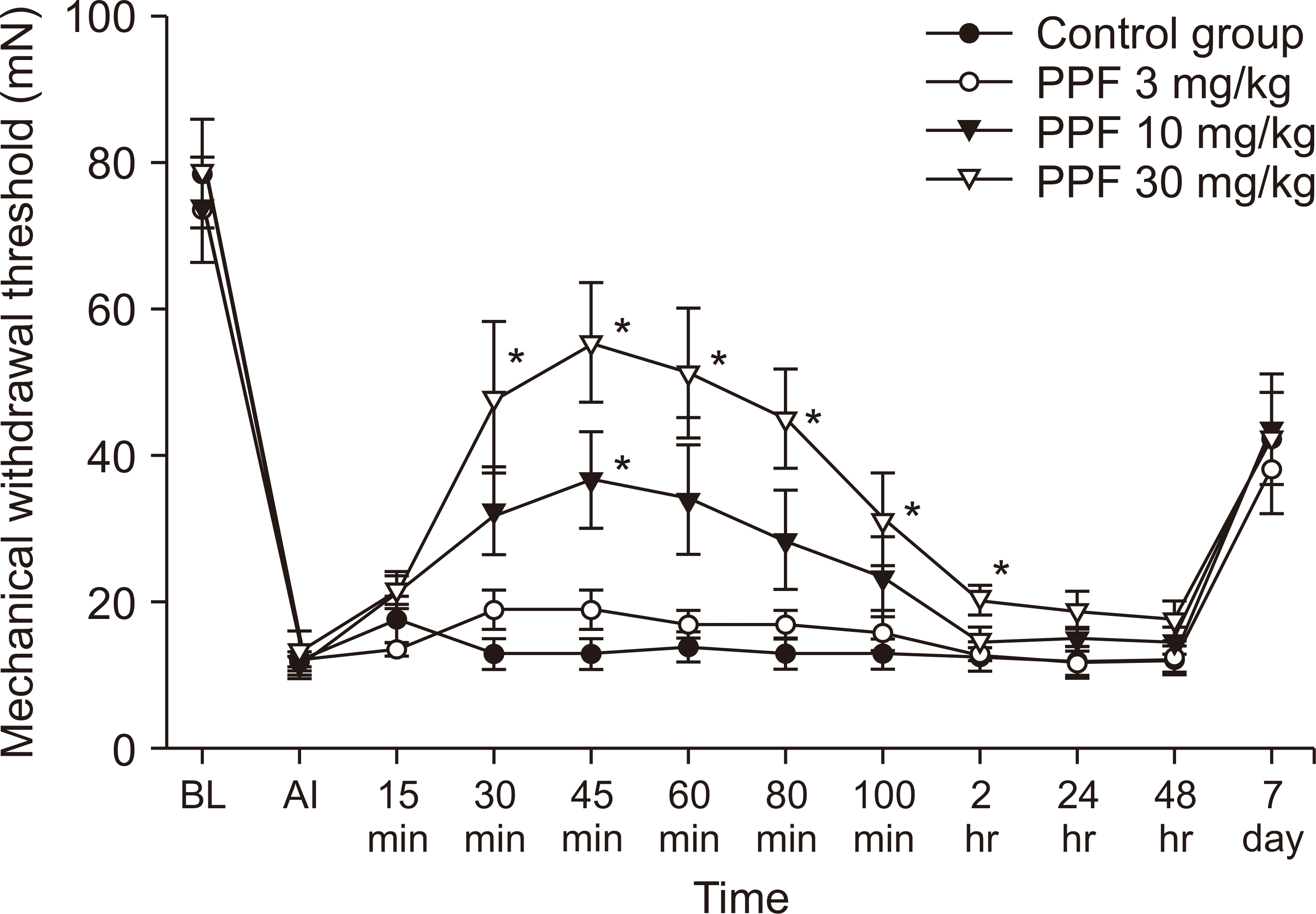
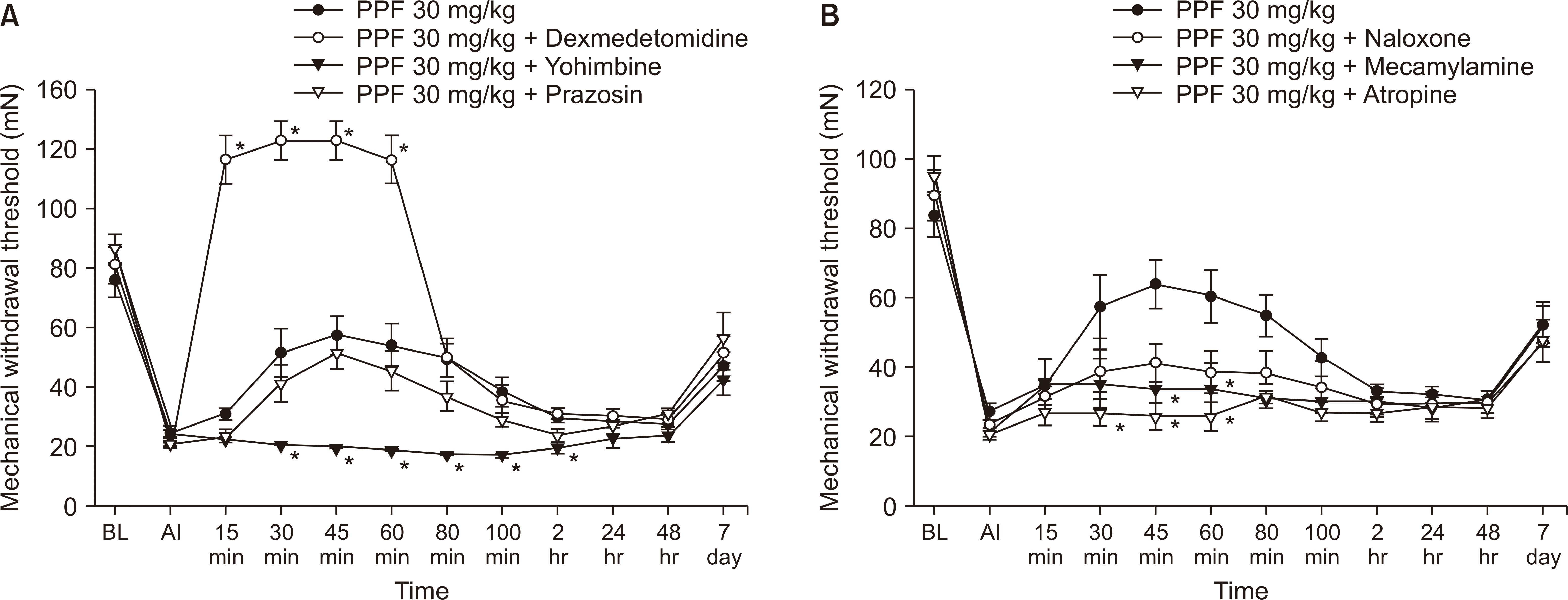
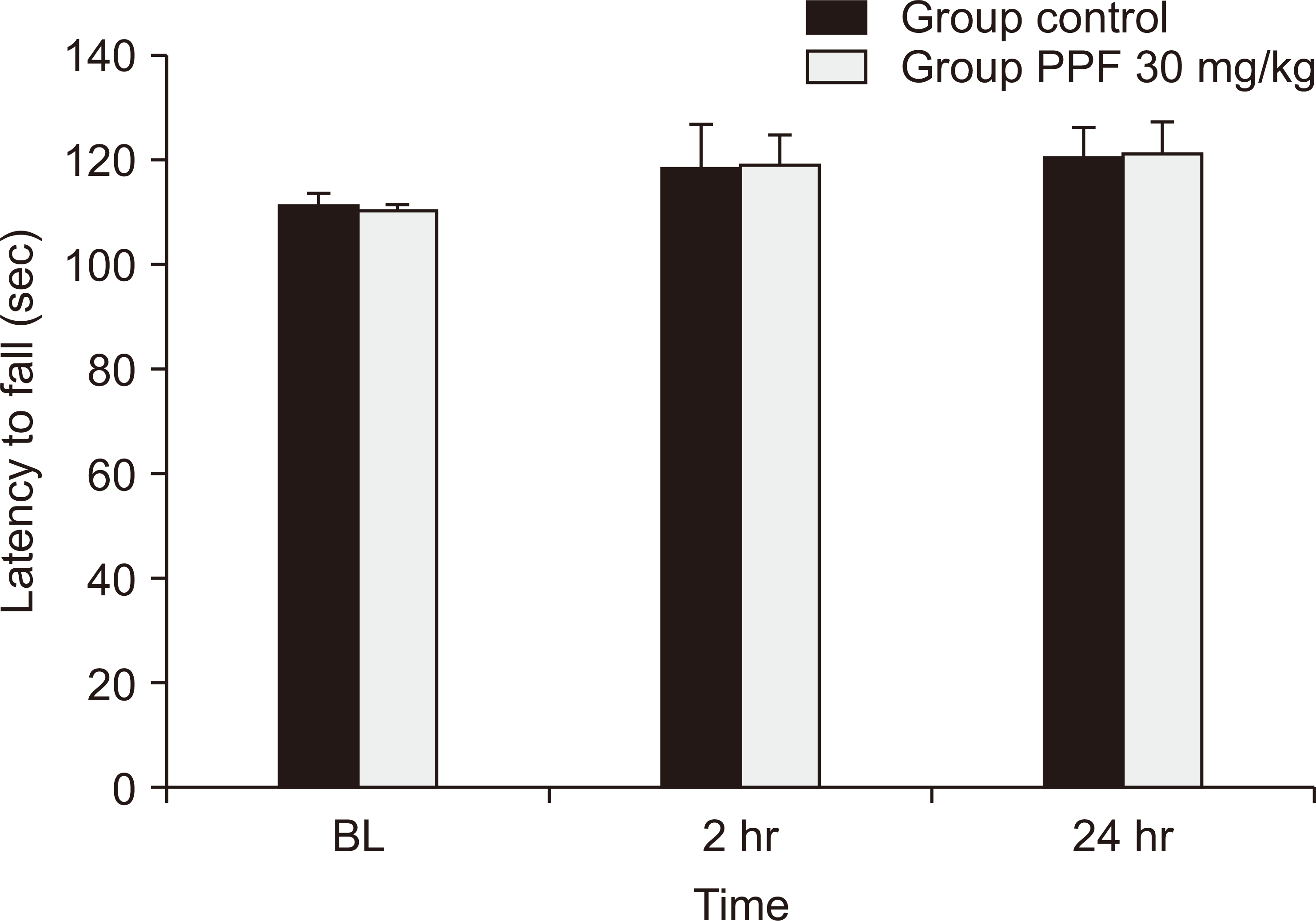

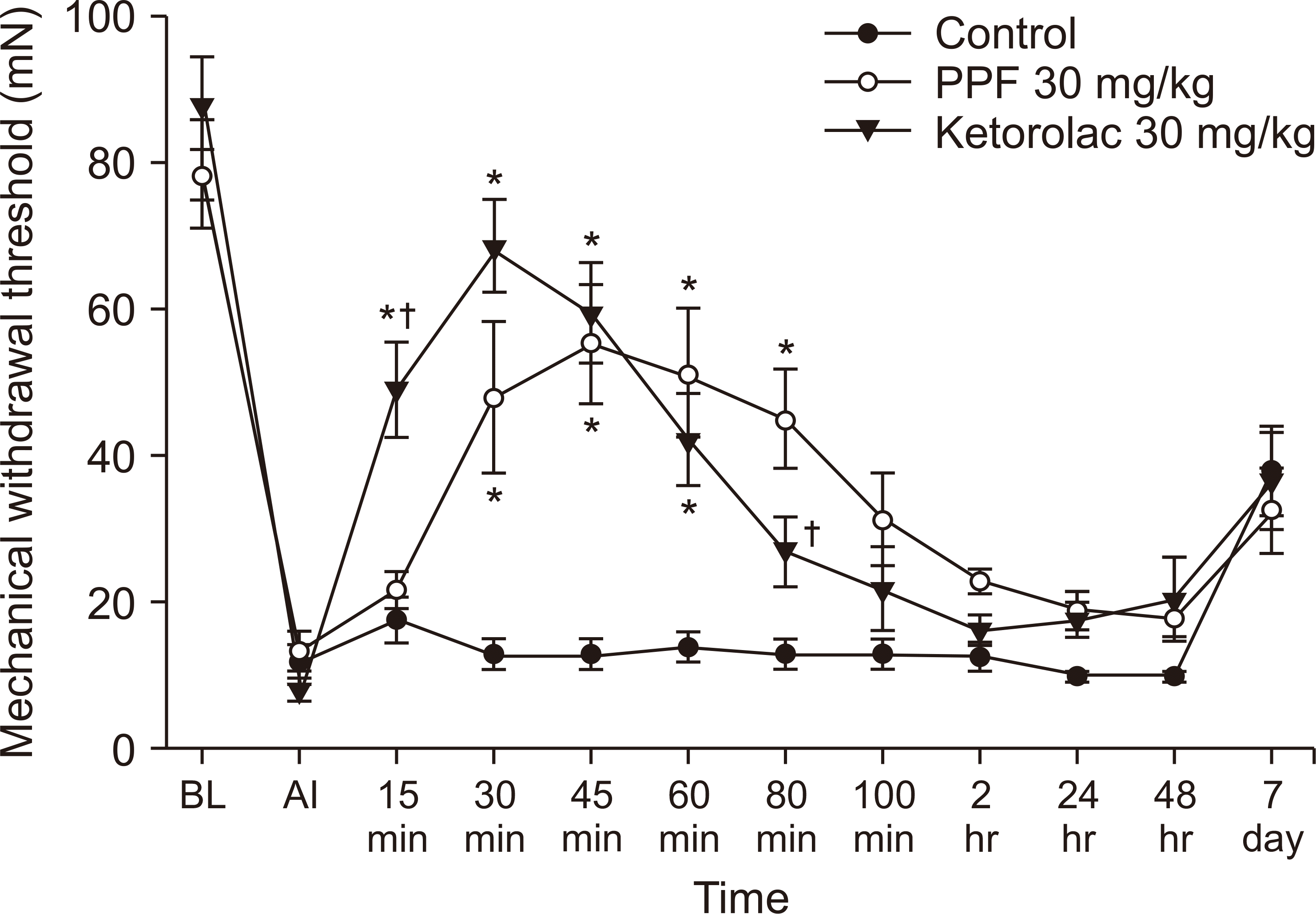
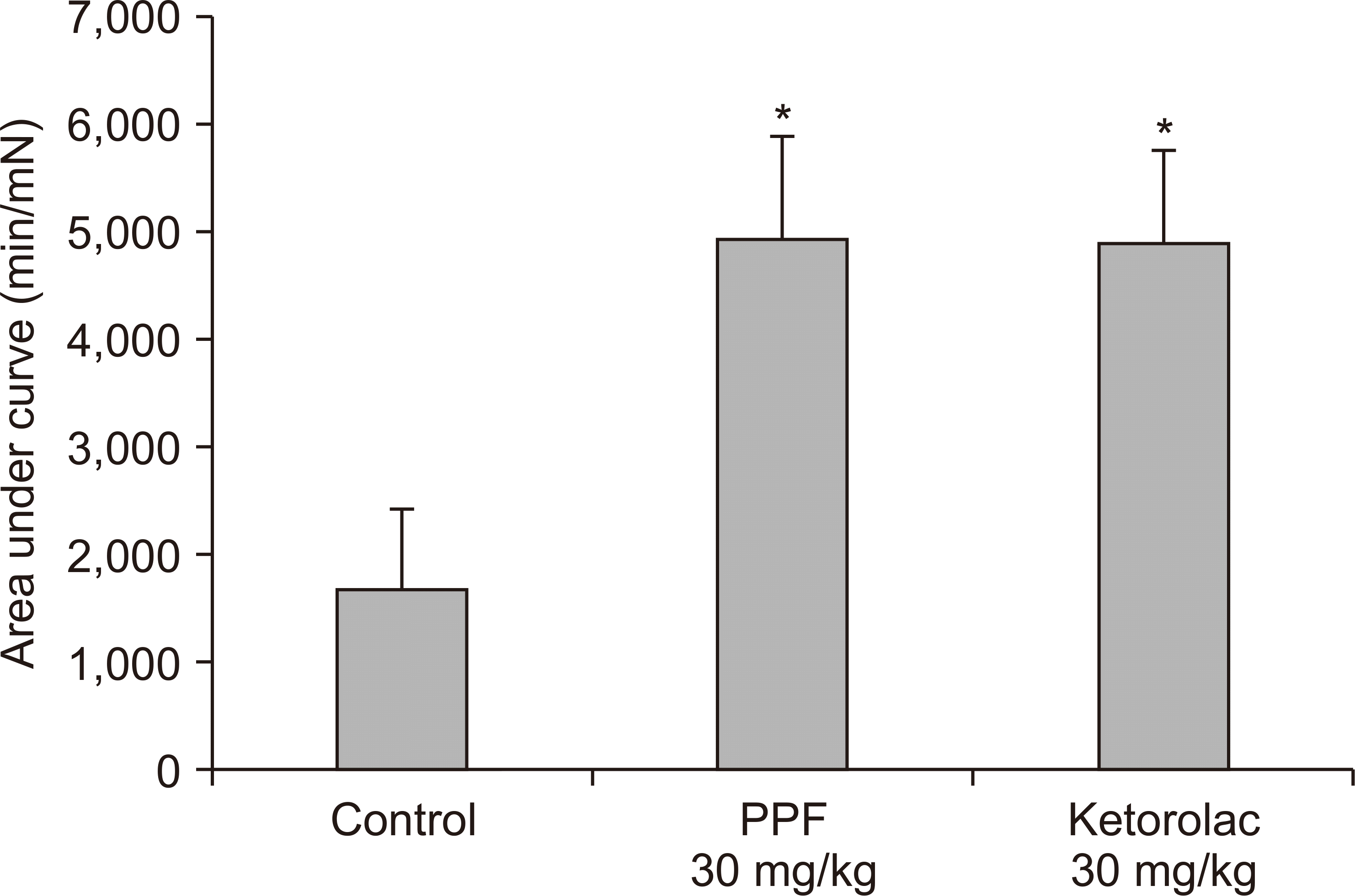
 XML Download
XML Download